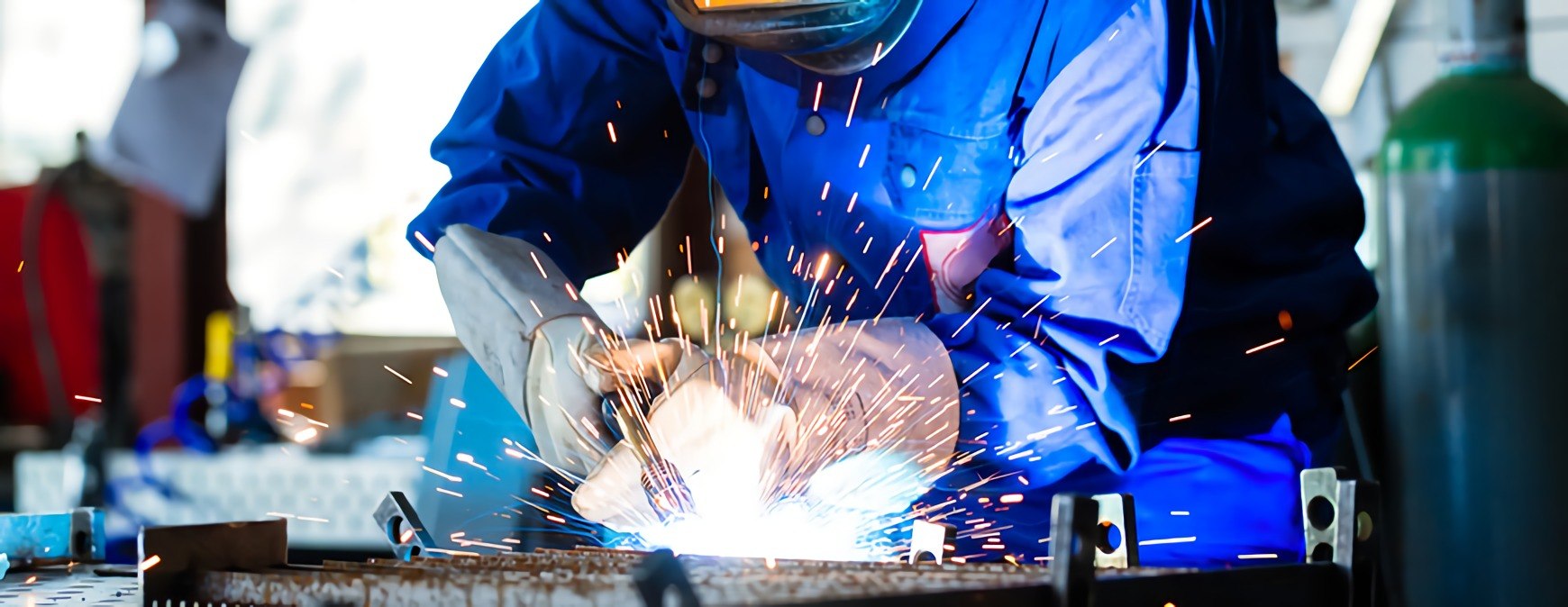RSI is a Great Training Option for Everyone
Learn more about how we can prepare you to advance your career.
When you drive to work everyday, open your computer, or even watch a NASCAR race, you probably don’t think about welding, but the process plays an integral role in all three of these things. In fact, more than 50 percent of U.S. products use welding. 1 What exactly is welding? Read on to discover more about this essential process.
Welding Definition
Welding is the fusing of two materials using pressure or heat. In the case of pressure, two surfaces coalesce after enough pressure is applied to them. With heat, the temperature must be raised to the point where the materials melt and flow together. Sometimes a combination of pressure and heat is necessary to join two materials. 2
Types of Welding Processes
You might be surprised to learn that there are more than 67 ways to fuse materials through the use of heat or pressure. Some use hammering or rolling to achieve the pressure necessary to permanently join two materials. Others employ an electric arc or open flame to bring metal to the fluid state required to weld or cut it. The type of equipment used also sets one welding process apart from another. Despite the wide scope and diversity of welding processes, the industry utilizes just six types of welding the most.
Most Popular Welding Processes
- Oxyacetylene Welding (OAW)
- Shielded Metal Arc Welding (SMAW)
- Gas Tungsten Arc Welding (GTAW)
- Gas Metal Arc Welding (GMAW)
- Flux Cored Arc Welding (FCAW)
- Torch or Oxyfuel Brazing (TB) 3
Metallurgy
How does a welder know which of the many processes to choose from to produce a weld that is as tough and strong as possible? Metallurgy is the scientific study of metals. 4 Understanding the mechanical and chemical properties of metals can help welders predict the reaction heat or the surrounding environment will have on them.
Mechanical Properties
The characteristics that allow metals to withstand externally imposed forces without failing are their mechanical properties. Heat treatments can make metals soft, hard, strong, or brittle, so it’s important for welders to know which metals, processes, and procedures will produce a safe and sound structure. 5
Get Started on the Path to a New Career
Fill out our form to learn how we can help you change your life.
Chemical Properties
The way metals react in certain environments can be described as their chemical properties. 6 For example, oxygen can create several problems with a weld: it can result in inclusions, damage appearance, and reduce strength, toughness, and ductility, or malleability. In order to prevent such problems, welders use techniques, such as shielding gases, to protect their work from atmospheric contamination. 7
Welding Applications
There are few items or structures in our modern world that don’t rely on welding. Innovations small and large utilize the technology: from dental braces to telecommunications satellites; computer components to the space station; home appliances to ships, buildings, and bridges. Even roller coasters are constructed with welding. We also have welding to thank for keeping us warm on frigid days and cool on sweltering ones because it is used to make furnaces and air conditioners. Welding has a tremendous impact on the world. 8
A Career in Welding
As you can see, welding is a complex technology with widespread applications. However, it can not only be learned but also mastered with the right welding training and experience. Men and women of all ages are entering the field all of the time and making a difference in the world with their important work.
Additional Sources
1 – http://www.careersinwelding.com/welding_fun_facts.php
2 – Title: Welding Principles and Applications; Author: Larry Jeffus; Delmar Cengage Learning; Seventh Edition; Textbook pages 5-6
3 – Title: Welding Principles and Applications; Author: Larry Jeffus; Delmar Cengage Learning; Seventh Edition; Textbook page 8
4 – Title: Welding Principles and Applications; Author: Larry Jeffus; Delmar Cengage Learning; Seventh Edition; Textbook page 902
5 – Title: Welding Principles and Applications; Author: Larry Jeffus; Delmar Cengage Learning; Seventh Edition; Textbook pages 641-643
6 – http://www.g-w.com/pdf/sampchap/9781590704059_ch03.pdf
7 – Title: Welding Principles and Applications; Author: Larry Jeffus; Delmar Cengage Learning; Seventh Edition; Textbook page 661
8 – Title: Welding Principles and Applications; Author: Larry Jeffus; Delmar Cengage Learning; Seventh Edition; Textbook page 6
This blog has been labeled as archived as it may no longer contain the most up-to-date data. For a list of all current blog posts, please visit our blog homepage at https://www.rsi.edu/blog/




